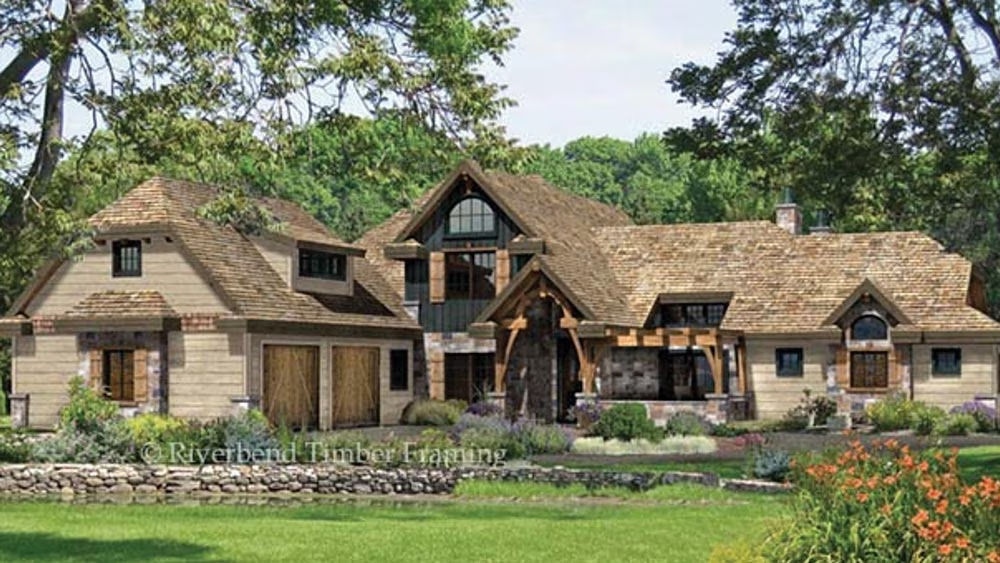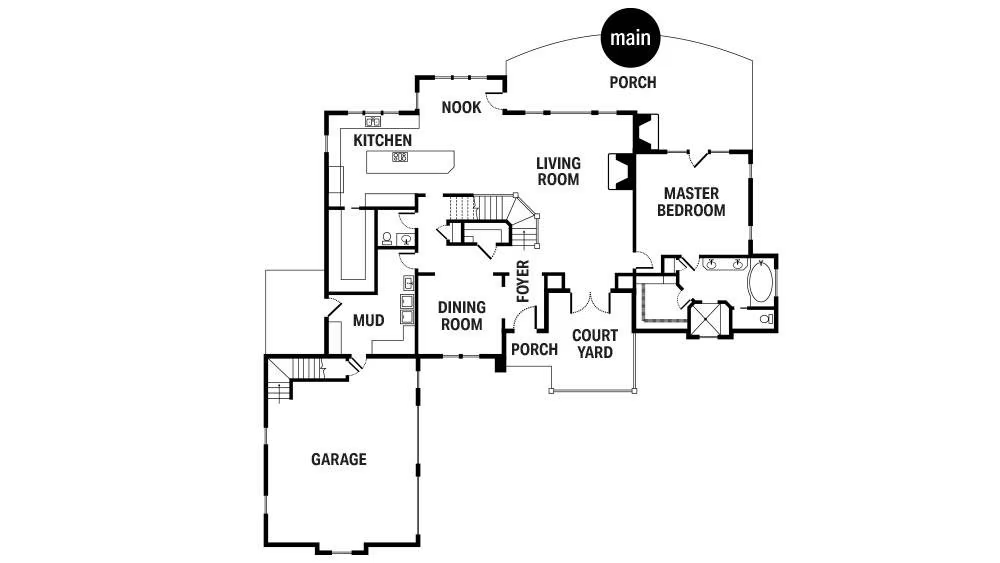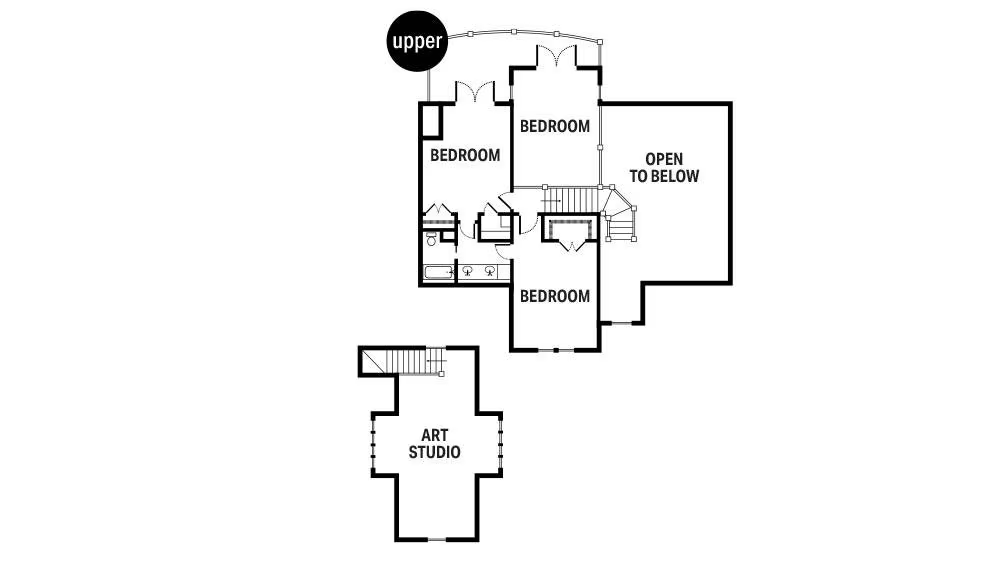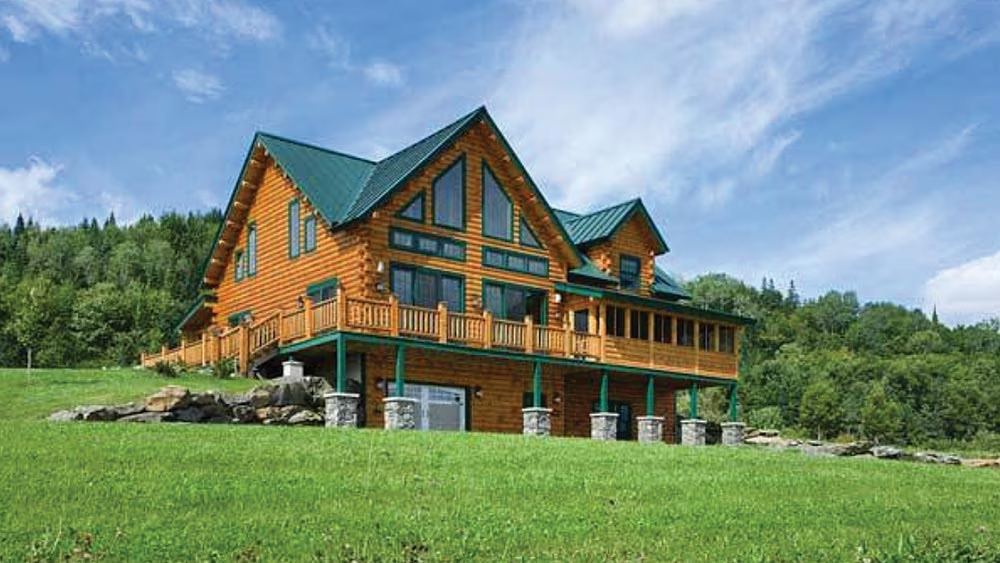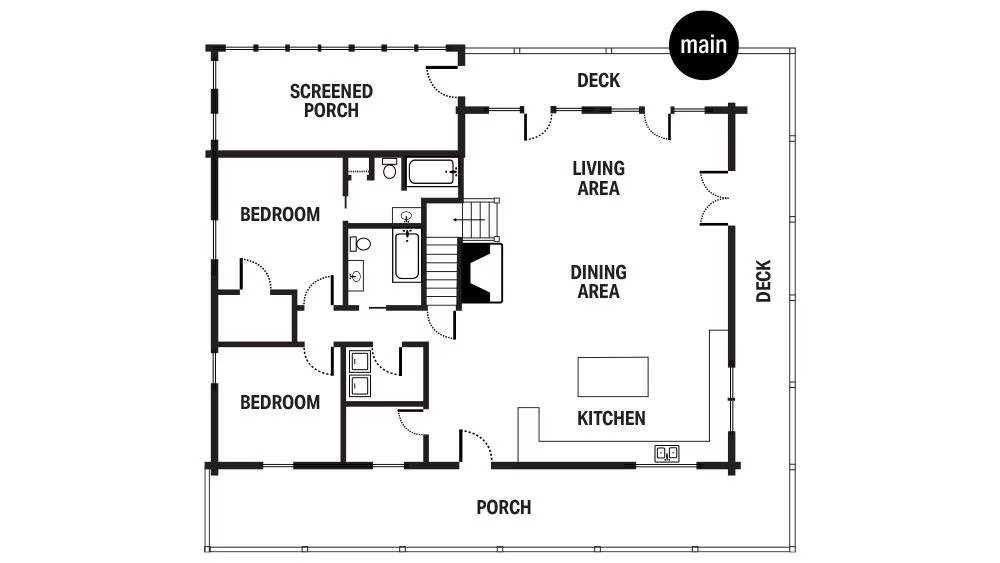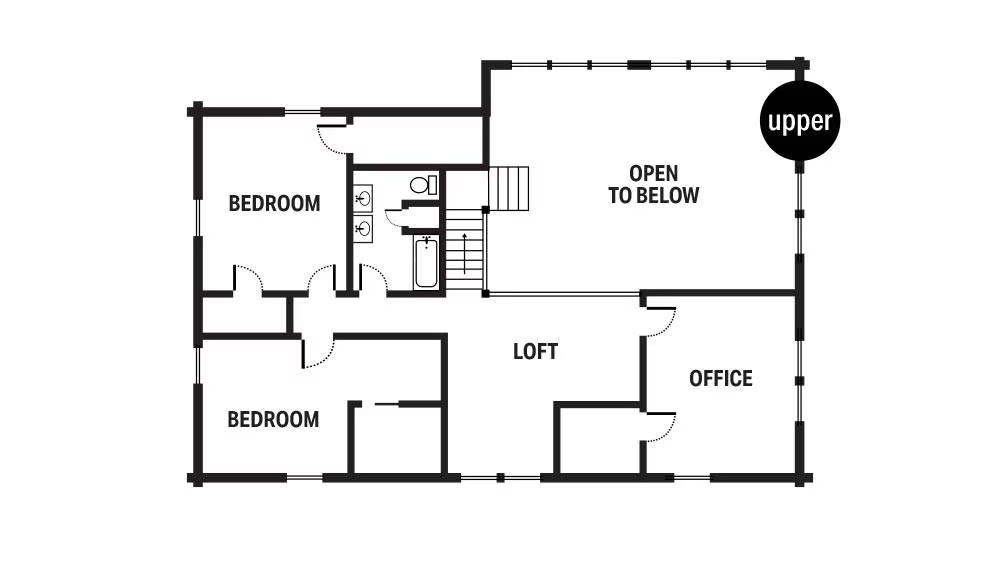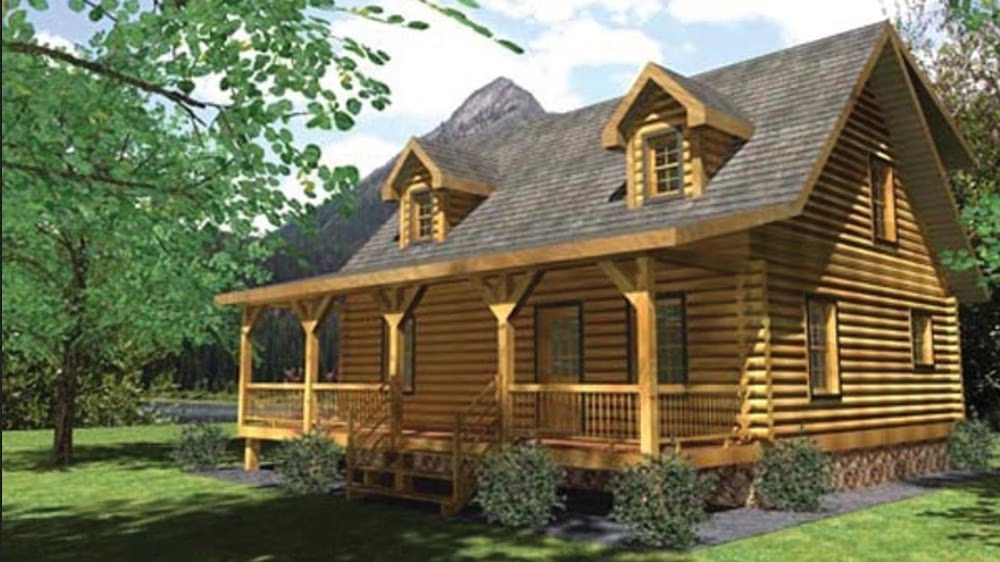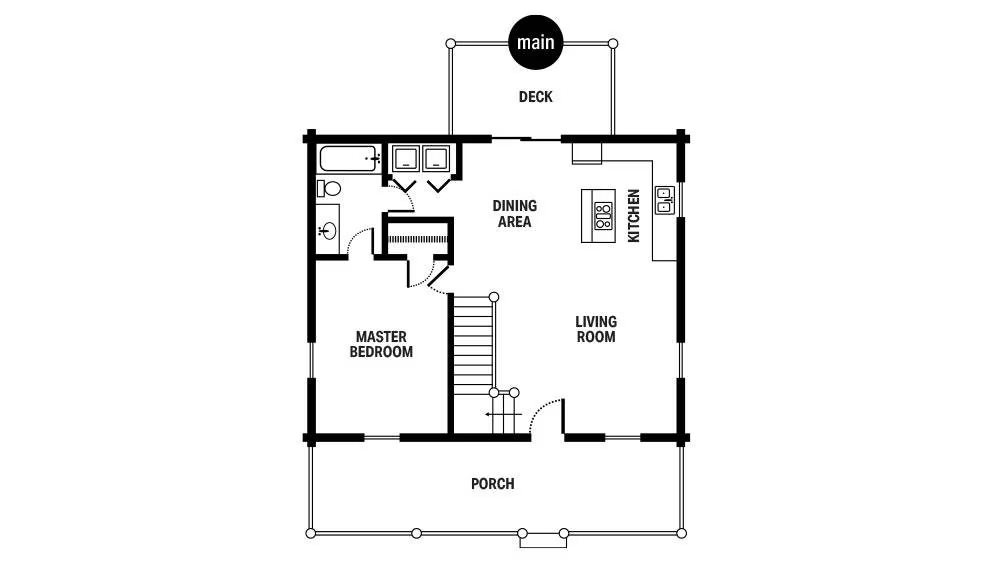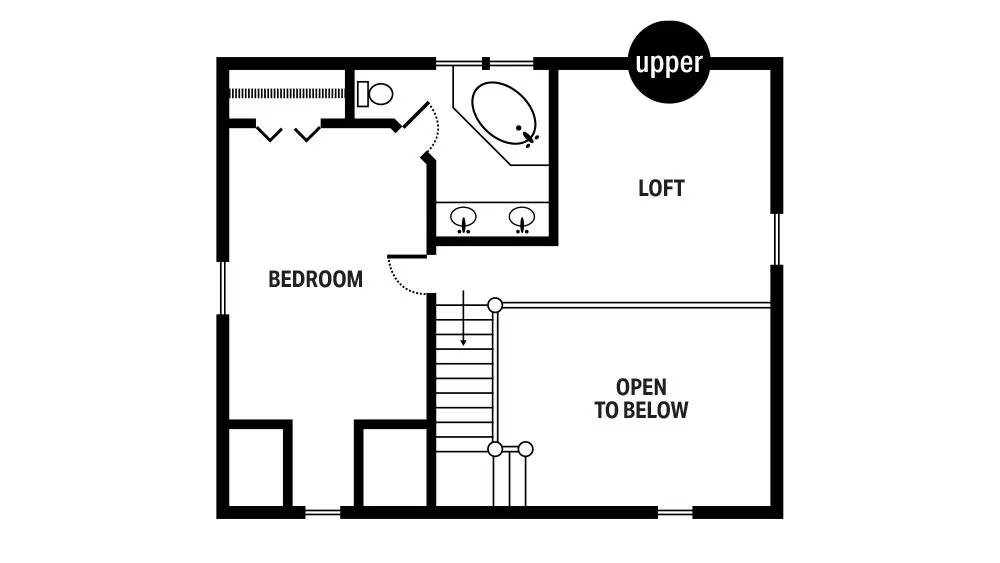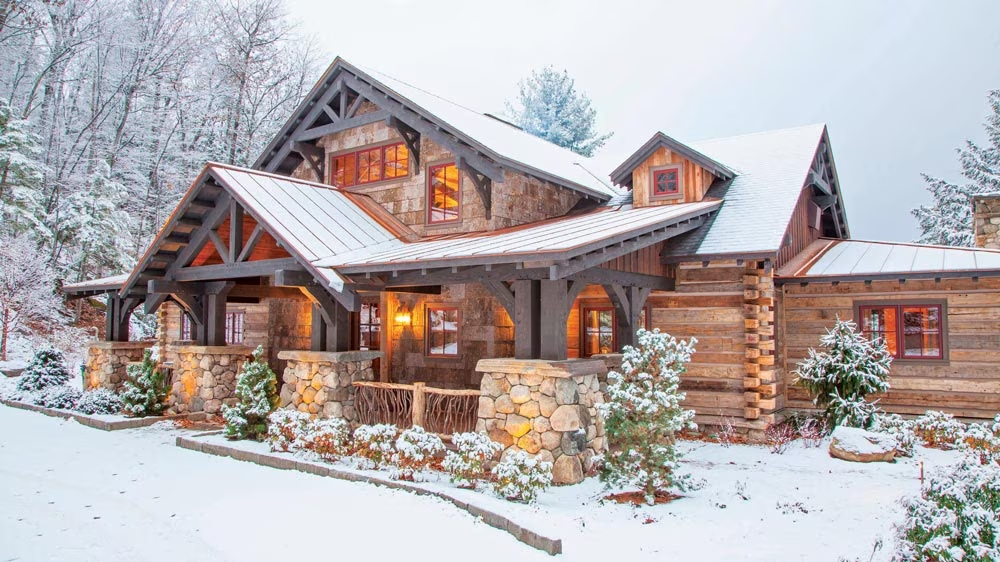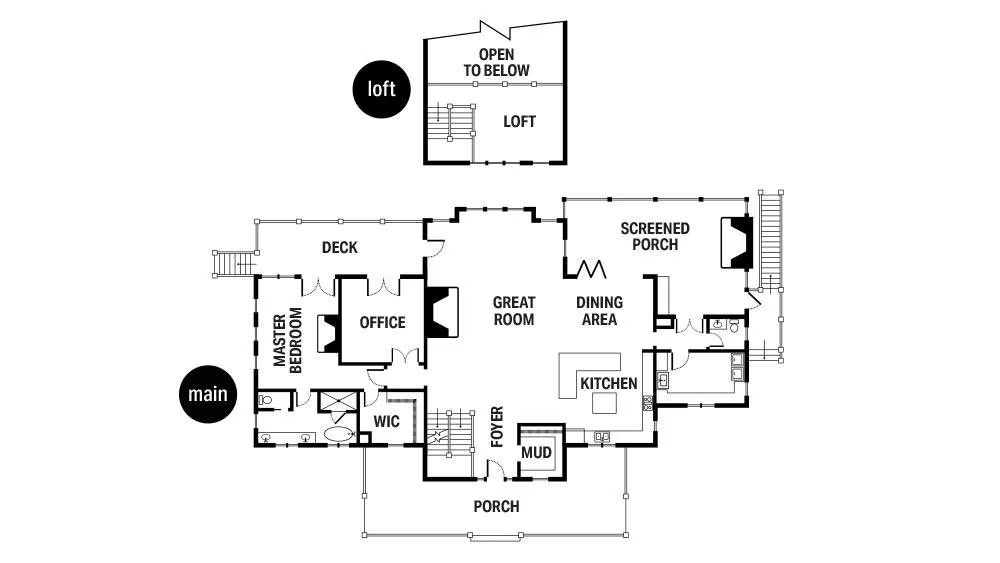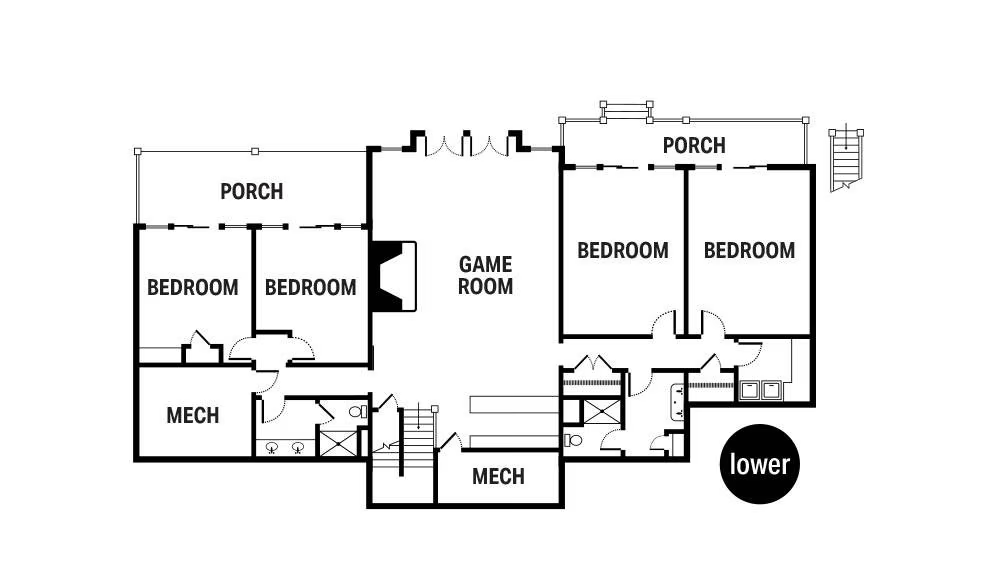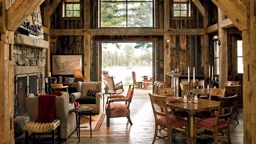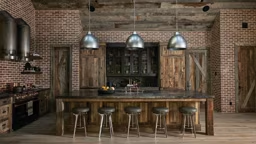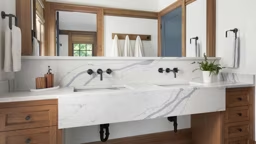For many, the pivot to working from home has provided plenty of perks – no commute, geographic flexibility and no stinky fish in the communal microwave. But for some, the blurred lines tipped the work/life scale out of kilter, knowing those pesky to-do lists and unanswered emails are always lurking just in the other room. A designated desk or separate office space — ideally with a door — can bring some relief, but the key to achieving true work/life balance begins with the right layout.
So you won’t feel like you’re in the break room every time you eat breakfast, use the following big ideas when planning your home’s design to create an arrangement that brings your professional and personal lives into harmony.
The Hickory Lakes by Riverbend Timber Framing
Square Footage: 3,176
The Big Idea: Leave Home ... Without Really Leaving
The first, and most obvious, rule of work/life balance is to leave work at work, an edict that’s easier said than done. For some, physical separation is just the fix, but instead of heading to the garage and hopping in the car on weekdays, what if the commute ended at the top of the stairs? An office above the garage (or within an accessory building, like a carriage house) adds balance by keeping your job outside of your living quarters.
The Hickory Lakes plan accommodates with a 12-by-25-foot studio space situated squarely above the garage. The space is accessed from the main home through the mudroom and up a flight of stairs, so it feels removed enough to help you disconnect.
Tip! If you built your home before the rise of remote work, accessory dwelling units (ADUs) are a convenient way to add space without adding on.
The Bear Rock by Coventry Log Homes
Square Footage: 2,668
The Big Idea: Reduce Distractions
The modern home office comes with enough distractions as it is — emails, texts and notifications vying for your attention during family time. One way to reduce real-life interruptions is by not only incorporating a designated home office into your plan but positioning it somewhere private. In fact, when hidden away from hangout zones, you may find your home office is quieter than your company’s headquarters. For homes where multiple residents needs to clock in each day, consider his-and-hers home offices, potentially even in separate wings to reduce conference call conflicts and background noise.
The Bear Rock boasts a smartly situated office in an upstairs corner where family members are unlikely to pass by throughout the day. With easy access to the upstairs restroom and its own storage space, this 13-by-15-foot home office has it all.
Tip! If you incorporate an office in your layout, make sure it’s large enough to shift to another purpose come retirement day, whether that’s a basic spare bedroom or spacious hobby area.
The Frontier D by Honest Abe Log Homes
Square Footage: 1,394
The Big Idea: Sanction Off Space
Maybe you don’t want to commit to a full home office, but you still want more than the increasingly popular “cloffice” (closet + office). Enter the loft office. Luckily, lofts are a common design feature in log and timber homes and are endlessly flexible when it comes to function. When you retire, they quickly transform into reading nooks, quilting corners and so much more.
When it comes to home offices, not all lofts are created equal. The Frontier D showcases how to have the best of both worlds: The loft is large and open to the living space below but is tucked away in its own corner. (Read: peace, quiet and privacy.) A catwalk-style loft may not be as suitable for studious endeavors.
Tip! Walkout basements can be just as convenient for flexible workspaces. If you’re building on a hill, explore if a walkout would be well suited for your site.
The Sunapee by MossCreek
Square Footage: 6,321
The Big Idea: Collaborate with Mother Nature
For fans of log and timber homes, the mood-boosting properties of nature come as no surprise. But for skeptics, science backs it up. According to the American Psychological Association, “Spending time in nature is linked to both cognitive benefits and improvements in mood, mental health and emotional well-being.” To capitalize on Mother Nature’s stress-reducing properties, incorporate walls of windows and access to the outdoors in your home office (an essential element of log and timber home design, regardless!).
The Sunapee positions the home office just off the main living spaces with double doors to a private deck shared with the master bedroom. Sometimes, all you need is a quick step outside to get the creative juices flowing.




